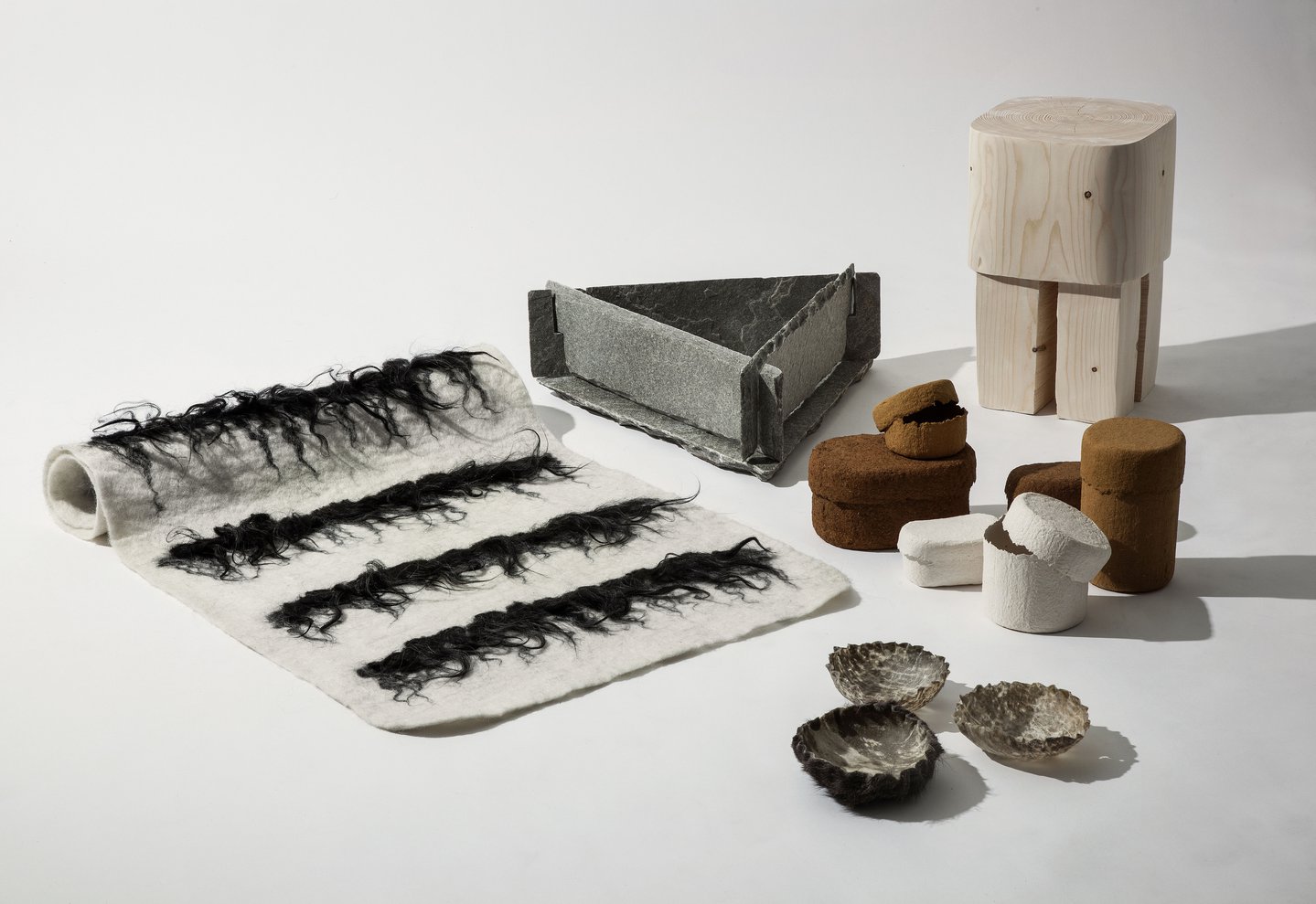
With the year’s first batch of design shows having drawn to a close, we’ve picked out a few of the materials that have caught our eye over the last few months.
From organically-inspired textures to surfaces in a palette of rainbow shades, we’ve seen a range of innovations that we’re excited to share with you. Here is our roundup of the top five picks.
It took us a while to work out what these small tiles were made of when we first caught sight of them at the Surface Design Show. Meteor rock? Solidified lava lamp? Television static? Not quite. It turns out these tiles are an amalgamation of plastic and naturally-occurring geological matter - forming an entirely new substance.
Through the plastic stone tiles, designer Enis Akiev wanted to explore the effects that the Earth’s environment had on plastic waste.
“The majority of plastic waste ends up in the sea, which gave rise to the question of how plastic waste behaves in nature. Under natural influences it forms plastiglomerate – a compound of plastic and natural geological components. It is a new kind of rock.”
For Akiev, the objective of her project is not only to create aesthetically-pleasing designs, but to also raise questions about how we interact with waste, and how we can reconstitute waste products in creative and unusual ways.
Akiev is encouraging us to look beyond the conventional uses of everyday textiles, and seeks to change our perceptions of ’waste’ by demonstrating how we can find creative and functional uses for materials that may otherwise be considered unusable.
cargocollective.com/enisakiev
At this year’s Stockholm Design Week, the trailblazing design firm, Baux, unveiled its line of biodegradable acoustic panels that combine exceptional sound absorption functionality with a modern, light aesthetic.
Baux, widely regarded as the leading expert in producing acoustic panels, has shown that you don’t need space-age synthetic materials for successful sound-proofing; organic elements are just as effective. The panels’ pulp-like composition means that they capture and reduce sound in all types of commercial environments.
The panels also incorporate a number of different plant fibres into the design, which provide the following benefits: fire retardancy from grass root, water repellency from lotus flowers, and robustness from plant wax.
It’s also very apt that a panel that looks so calming and peaceful has the capability to reduce excessive noise levels. In this design, function and aesthetics are working together in perfect harmony.
www.baux.se/acoustic-pulp-panels
Is it a curtain? Is it a net? Is it a kaleidoscopic technicolour rainbow? We’re not too sure about the last one, but it’s certainly a combination of the former.
By combining thousands of small multi-coloured chain links, Trevira CS has created a one-of-a-kind curtain that has as many design applications as it has colours.
It can be used to create distinct ‘mini-zones’ within a larger space while retaining an openness and freshness that couldn’t be achieved with walls, dividers or fully-opaque curtains.
And from wherever you’re standing, the curtain looks subtly different. From close-up, you can see each individual chain link, whereas by standing a few metres back, you see how these links interact with each other to form a fine mesh. Standing even further back, it appears out of the ground as a prismatic mirage. We certainly weren’t expecting that level of visual depth and variety from a curtain.
www.trevira.de
To say that this lamp is ‘going back to nature’ doesn’t quite do it justice. Instead, it’s more of an extension of nature itself.
Made by Swedish designer, Jennie Adén, this Ticka lamp is one of the more innovative and adventurous applications of natural materials that we’ve seen during the AW19 season.
Jennie combines Ticka, otherwise known by its less exotic English name of ‘Polypore’, with water to create a fungus-based pulp. This can then be applied to a variety of different moulds to create biophilic, textured pieces that are certain to be the focal point of any room.
As you may expect, no artificial dyes or colourings have been used in the production of the Ticka materials; the colour of the finished piece is completely dependent on the shade of the Ticka raw ingredients.
With a trend towards versatile spaces that blur the lines between indoor and outdoor - unorthodox, organic textiles such as Ticka are ideal for bridging the gap between nature and the built environment.
As we approach the next set of design shows starting in spring, stay tuned to our blog and social channels for regular updates on design trends and innovations from our expert team.
Photo credit: Jennie Adén